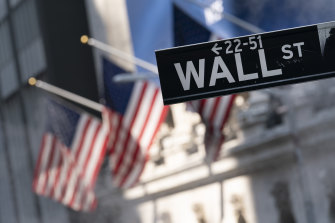ETF investors opt for local stocks amid sharemarket dive

Investors continue to pour money into Australian exchange-traded funds (ETFs), despite a $12-billion decline in their value over the first half of the year, thanks to falling global sharemarkets.
At the end of June, total funds under management for the Australian ETF industry were $124.3 billion, down 9 per cent from the same period a year earlier. However, net inflows increased by $6.2 billion, showing that investors still have a keen appetite for the popular asset class, particularly ETFs that contain local stocks.
International stocks have fallen out of favour among ETF investors.Credit:AP Photo/Mark Lennihan
ETFs are largely passive investments that track a basket of equities or other assets, giving investors broad exposure to markets without having to buy multiple shares in different companies.
Some of the most popular ETFs include Vanguard’s Australian Shares ETF, iShares S&P 500 ETF, and BetaShares’ Australian Government Bond ETF, all of which are traded on the Australian Securities Exchange (ASX) and can be bought and sold like shares.
Though they remained popular through the start of 2022, inflows are down compared to 2021.
Investors have been cutting their exposure to more volatile international equities markets to bring their money closer to home, with inflows into Australian equities ETFs doubling.
BetaShares chief executive Alex Vynokur attributes the rush back to local equities to rising inflation and interest rates globally, factors which have also seen increased inflows into fixed-income ETFs, which include assets such as bonds and floating interest-rate notes.
Similarly, Vanguard – Australia’s largest ETF provider – reported a 148 per cent increase in fixed-income ETF inflows for the second quarter, to $806 million.
Minh Tieu, Vanguard Australia’s head of ETF capital markets, says the rise in fixed-income investing further reinforces the benefits of diverse portfolio allocation.
“An uptick in fixed-income flows suggest investors are capitalising on the higher yields to be delivered by newer bonds as a result of recent rate hikes – a welcome boost for those retired or approaching retirement,” he says.
Active ETFs, which demand higher fees but have a fund manager, reported net outflows for the half.
ETFs are popular choices among young investors who often do not have the capital nor experience to pick their own share portfolio.
John Winters, chief executive at youth-focused share trading platform Superhero, says the asset class is more popular with Millennials and Gen Z, as older investors prefer to pick their own individual stocks.
Superhero has seen a solid uptick in ETF investments in the past six months, which he attributes to investors looking for diversification and stability as global markets look increasingly volatile.
“Last year, we had crypto going crazy, we had all the meme stock runs, so much hype and froth in the market. Since then, investor sentiment has changed, with inflation starting to pick up and interest-rate changes coming through,” he says.
“We’re seeing more inflows into ETFs now. People just want that diversification because they don’t want the stock-specific risk in a high-interest rate, high-inflation environment, where valuations on growth stocks are getting slashed every day.”
Unsurprisingly, some of the best performing ETFs for the first half of the year are those that take short positions in equities, which benefit from market falls. Similarly, energy funds that have investments in oil – a commodity that has rocketed in price this year – performed strongly.
- Advice given in this article is general in nature and is not intended to influence readers’ decisions about investing or financial products. They should always seek their own professional advice that takes into account their own personal circumstances before making any financial decisions.
Most Viewed in Money
From our partners
Source: Read Full Article

